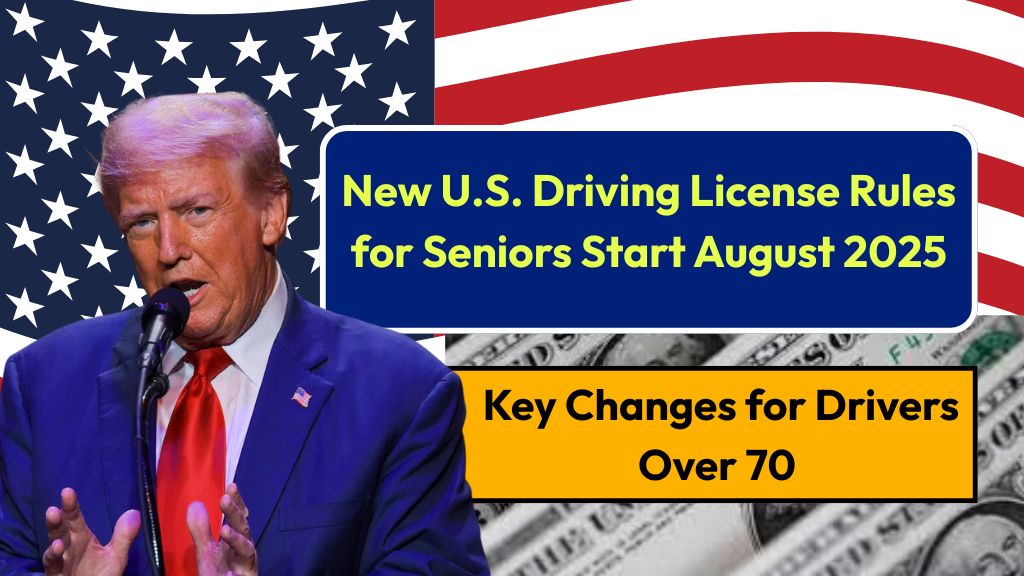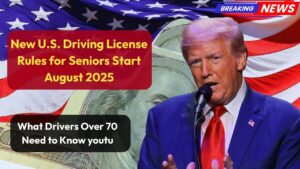America’s senior population is growing fast — and so is the number of older drivers. By August 2025, a new federal U.S. driving license rule will take effect, targeting drivers aged 70 and above.
This isn’t about taking away keys or independence. Instead, it’s designed to make sure everyone on the road — young or old — is safe and capable behind the wheel.
Think of it as a routine driving health check-up, not a crackdown.
Why the New Law Was Introduced
Right now, around 48 million Americans aged 65+ have an active driver’s license. According to the National Highway Traffic Safety Administration (NHTSA), this number will increase sharply over the next two decades.
While staying mobile is vital for seniors, studies show that aging can affect:
- Reaction times
- Night vision
- Cognitive skills
At 65 mph, even small delays in judgment can make a big difference. This new law aims to keep roads safer without unnecessarily limiting independence.
How the Tiered Renewal System Works
Instead of setting a fixed “retirement age” for driving, the law introduces a tiered license renewal system. This combines age-based timelines with ability assessments.
| Age Group | Renewal Frequency | Additional Requirements |
|---|---|---|
| 70–79 | Every 4 years | Vision test (in person or telehealth in some states) |
| 80–86 | Every 2 years | Vision + reaction time / cognitive screening |
| 87+ | Annually | Full in-person driving assessment |
Reporting Unsafe Drivers
One key change is that family members, doctors, or concerned citizens can report a driver they believe is unsafe.
If reported, the DMV can require:
- A medical evaluation
- A road test
This is meant to prevent accidents before they happen — not to encourage unnecessary complaints
State-by-State Variations
Driving laws are managed at the state level, so the exact process may vary:
- Some states will allow telehealth vision tests.
- Others may require all assessments in person.
- Rollout dates could differ slightly.
For example, California’s DMV Senior Guide already has similar policies in place. Check your state DMV website for updates.
Restricted Licenses: A Middle Option
Failing part of an assessment doesn’t always mean losing your license.
You might receive a restricted license that allows:
- Daytime driving only
- Local trips within a certain distance
- Use of low-speed roads only
This helps seniors maintain independence while reducing risk.
Preparing for the Transition
If you eventually decide to stop driving, there are more transport options than ever:
- Ride-share apps like Uber or Lyft
- Community senior shuttles
- Public transportation with senior discounts
Some cities even offer free ride programs for older adults, making the change easier.
Quick FAQ
Do I lose my license at a certain age?
No. The law changes how often and how thoroughly your license is renewed, not whether you can drive based on age alone.
Who does this apply to?
Drivers aged 70 and older, with the most frequent checks for those 87+.
Can someone report me as unsafe?
Yes — and the DMV may require an evaluation before allowing continued driving.
Will I have to go in person every time?
Not always. Some states will allow telehealth vision checks.
What happens if I fail a test?
You may get a restricted license instead of losing driving privileges completely.
Final Takeaway
This August 2025 senior driving law is about safety and mobility, not punishment. By focusing on skill rather than age, it keeps older drivers on the road longer — safely.



